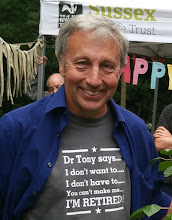Imagine recharging your batteries, away from hustle and bustle of cities and towns, in wild areas, managed by nature.
Imagine huge and exciting new wetlands, alive with wild birds, and holding back the water which might otherwise flood our homes.
Imagine nature reserves where flower-rich meadows, downland, and inviting woodlands stretch as far as the horizon.
Imagine being able to walk from your front door into a continuous stretch of wildlife-rich greenspace intermingling with urban areas and extending into the countryside for miles beyond.
Imagine countryside and urban greenspace richer in wildlife than it is today, also helping to maintain our climate, produce our food, and replenish our spirits – a countryside for the 21st Century.
That is what "A Living Landscape for the South East" is aiming to create - an ecological network, a matrix of wildlife habitat extending accross the county and linking up with similar nature networks in surrounding counties.
The need for an ecological network approach
Nature conservation in Britain has often focused on protecting special sites - Sites of Special Scientific Interest (SSSIs), nature reserves, locally important wildlife sites. This has been essential to stem the huge loss of wildlife over the last century.
This approach has proved successful in defending wildlife where it remains. But it does not give us a way to restore and rebuild the natural environment in the wider countryside and town.
We need to increase the ability of the environment to protect us from flooding and erosion, to soak up carbon dioxide and to recycle nutrients and water (‘ecosystem services’). This will demand the restoration of extensive areas of natural habitat, particularly wetlands and woodlands.
Better access to the natural environment helps improve mental and physical health, and improves quality of life. We need to bring wild places to more people.
Isolated nature reserves and other protected sites are unlikely to be able to sustain wildlife in the long term. Sites will need to be buffered, extended and linked if wildlife is to be able to adapt to environmental changes such as climate change.
Outside of protected sites, once common and widespread species are in catastrophic decline. Reversing this decline needs a new approach.
Wildlife restricted to isolated patches in an otherwise hostile environment is vulnerable and unstable. The dynamic nature of species populations, the impacts of natural and man-made events, and the effects of climate change mean that wildlife needs large, functional areas or networks which give it room to adapt, resilience to change, and opportunity to spread.
"A Living Landscape for the South East" describes a landscape scale network of wildlife habitat that would ensure the long term ecological functioning of the South East Region’s unique natural environment. It expands horizons beyond the protection of existing wildlife sites, and offers a new and exciting agenda for habitat restoration and creation.
"A Living Landscape for the South East can be downloaded from teh Sussex Wildlife Trust web site. http://www.sussexwt.org.uk/conservation/index.htm . I am also in the process of writing a version of this focused much more on Sussex itself. This should be available in a few months time. In the mean time please download and read the south East version.

No comments:
Post a Comment